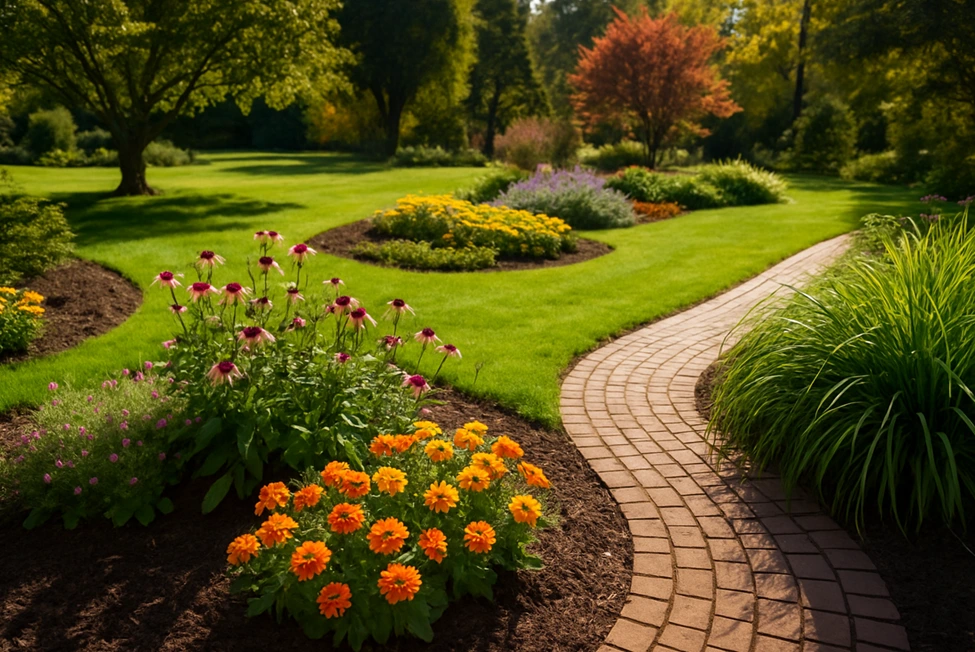Seasonal Landscaping Tips for Australian Gardens
Australia’s climate varies greatly across its regions. From tropical zones in the north to temperate zones in the south, garden care requires different approaches throughout the year. Knowing how to adjust your landscaping based on the seasons helps plants grow better and reduces long-term maintenance.
Each season brings changes in weather, soil conditions, and plant growth patterns. By planning ahead and choosing suitable tasks for each period, homeowners can improve the health of their gardens and use resources more efficiently.

Spring: Prepare for Growth
Spring in Australia marks the beginning of the growing season. Warmer soil temperatures and longer days help plants grow quickly. It is the right time to prune shrubs, clear dead leaves, and feed the soil with compost. Choose native plants that suit your climate, as they use less water and resist local pests.
Lawn care becomes more important in spring. Mow regularly, but avoid cutting the grass too short. Aerate compacted areas to allow better root growth. Water early in the morning to reduce evaporation. This is also a good time to plant vegetables such as tomatoes, capsicum, and beans in most regions.
Check irrigation systems for leaks or blockages. Replace worn parts and adjust settings for warmer days. Healthy irrigation keeps water use low while keeping the garden well-fed. You can find irrigation tips from the Australian Government’s Water website.
Summer: Focus on Water and Shade
Summer brings high temperatures and dry conditions. To protect plants, mulch garden beds with organic materials like bark or sugarcane. Mulch holds water in the soil and keeps roots cool. Water deeply but less often to encourage strong root growth. Avoid watering during the hottest parts of the day.
Shading plants can reduce heat stress. Use shade cloths or position larger plants to cover smaller ones. Avoid pruning during extreme heat, as it can weaken the plant. Keep lawn heights slightly longer to shield the roots from sun exposure.
Weeds grow fast in summer. Remove them early to stop competition for water. Inspect garden beds weekly to catch issues before they spread. Regular maintenance saves time and effort in the long run.
Autumn: Restore Soil and Plant Perennials
Autumn is the best time to restore soil health and prepare the garden for winter. Fallen leaves can be composted or spread as mulch. Add organic matter such as worm castings or aged manure to boost soil fertility.
Perennials and trees do well when planted in autumn. The soil stays warm while the air cools, creating ideal root-growing conditions. Plant natives, herbs, and bulbs now for strong spring displays. Divide overgrown plants to keep them healthy and prevent overcrowding.
Rain increases during autumn in many regions. Use this time to collect rainwater in barrels. Redirect runoff to garden beds if possible. This helps conserve water and lowers costs. Professional landscaping services like KD Landscapes can also help design and plant your garden for long-term success during this optimal season.
Winter: Protect and Plan
Winter slows plant growth but offers a chance to plan. Prune deciduous trees and roses while they are dormant. Clear fallen branches and check for signs of disease. Move frost-sensitive plants indoors or cover them on cold nights.
Winter is a good time to design new garden areas. You can build raised beds, fix fences, or install garden lights. The soil can rest while you prepare for spring. If you plan to plant fruit trees, order them now to have them ready by late winter.
Test the pH of your soil. This helps you understand what plants will thrive in your garden. You can adjust pH levels with lime or sulfur depending on your results. The Royal Botanic Gardens Victoria offers helpful resources for soil testing and plant selection.
Australian gardens benefit from seasonal care that fits the local climate. Pay attention to the needs of your plants and adjust your tasks based on the time of year. This approach helps save water, reduce pests, and grow stronger plants.
Regular observation and simple changes can make a big difference. Gardening does not require perfect conditions—only good timing and consistency. Each season offers a chance to improve your landscape and enjoy outdoor spaces with less effort.